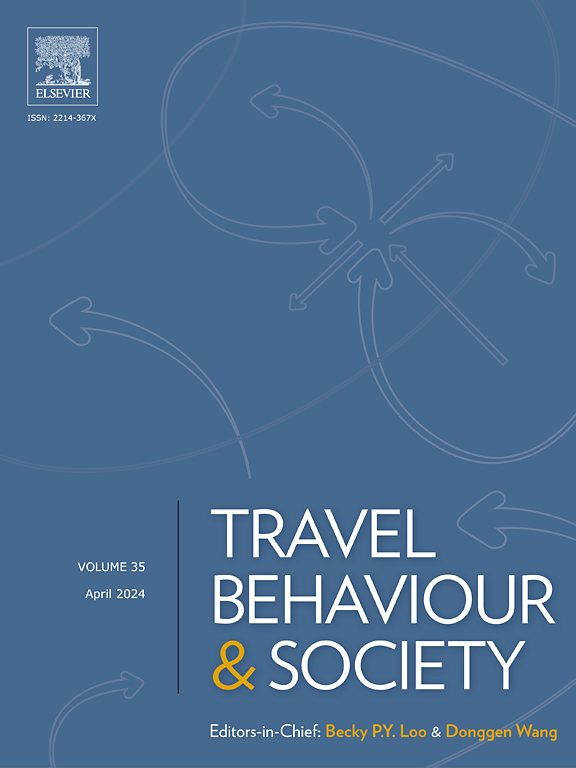IF 5.1
2区 工程技术
Q1 TRANSPORTATION
引用次数: 0
摘要
在人口稠密的城市地区,公共交通和私人交通的时空动态导致对有限道路空间的竞争加剧,尤其是在大规模集会活动期间。为解决这一问题,我们提出了一种双模式交通系统的优化设计方案,该方案整合了电子叫车和公共汽车服务,兼顾了效率、经济性和安全性。通过宏观基本图(MFD)将交通动态纳入双模式交通系统,我们捕捉到了交通流和乘客行为的变化。在总体水平上,总的广义成本被建模为包括感知行程成本、运营成本和安全成本,这些成本随时间变化的交通流模式而波动。通过动态模拟,我们对四种登机空间设计方案进行了评估。结果表明,在大型活动中加入电子叫车服务会增加双模式交通系统的动态复杂性和行人事故风险,从而增加乘客的安全成本。然而,通过为每种交通方式设计独立的登车空间,可大幅降低安全成本,从而降低总成本。这也大大降低了电子叫车出行的平均成本。这些发现为规划城市乘车空间、提高服务质量和管理交通拥堵提供了宝贵的决策支持。本文章由计算机程序翻译,如有差异,请以英文原文为准。
Boarding space design for passenger evacuation with bus and e-hailing services under a surge in traffic demand
In densely populated urban areas, the spatiotemporal dynamics of public and private transportation lead to intensified competition for limited road space, especially during mass gathering events. To address this issue, we propose an optimal design for a bi-modal transport system that integrates e-hailing and bus services, balancing efficiency, economy, and safety. By incorporating traffic dynamics through Macroscopic Fundamental Diagrams (MFDs) in a bi-modal transport system, we capture variations in traffic flow and passenger behavior. At an aggregate level, the total generalized cost is modeled to include perceived trip costs, operating costs, and safety costs, which fluctuate according to time-varying traffic flow patterns. Through dynamic simulations, we evaluate four boarding space design scenarios. The results show that incorporating e-hailing services into large-scale events increases the complexity of dynamics and the risk of pedestrian accidents in a bi-modal transport system, adding safety costs for passengers. However, by designing separate boarding spaces for each mode, safety costs are significantly reduced, lowering the total costs. This also leads to a substantial reduction in the average cost of e-hailing trips. These findings provide valuable decision support for planning urban boarding spaces, improving service quality, and managing traffic congestion.
求助全文
通过发布文献求助,成功后即可免费获取论文全文。
去求助
来源期刊

Travel Behaviour and Society
TRANSPORTATION-
CiteScore
9.80
自引率
7.70%
发文量
109
期刊介绍:
Travel Behaviour and Society is an interdisciplinary journal publishing high-quality original papers which report leading edge research in theories, methodologies and applications concerning transportation issues and challenges which involve the social and spatial dimensions. In particular, it provides a discussion forum for major research in travel behaviour, transportation infrastructure, transportation and environmental issues, mobility and social sustainability, transportation geographic information systems (TGIS), transportation and quality of life, transportation data collection and analysis, etc.
 求助内容:
求助内容: 应助结果提醒方式:
应助结果提醒方式:


